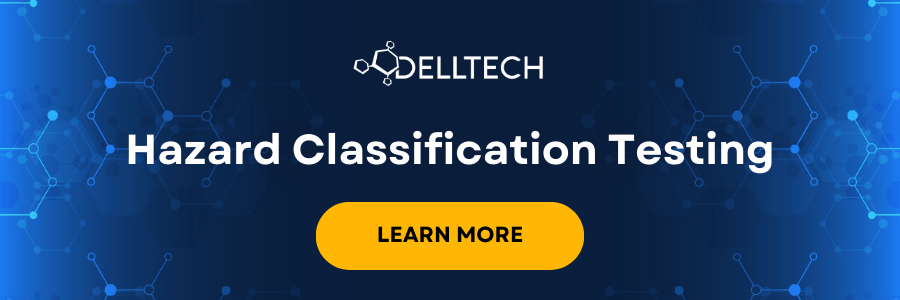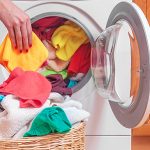Testing the Effect of Household Chemicals on Home Surfaces (Clear and Pigmented Organic) ASTM D1308
By: Katherine Hatherley, LABORATORY TECHNICAL SPECIALIST, email
When it comes to ensuring a positive consumer experience, testing the effects of household chemicals to determine if they have an undesired effect on common surfaces is of paramount importance. Consumers want to know whether a cleaner is safe to use in different situations. For example, you might have a citric acid cleaner that works wonders on ceramic tiles but could potentially damage the surface of a marble countertop.
To navigate these complexities and market your product accurately, rigorous testing is essential.
In this article, we’ll review ASTM D1308 – Standard Test Method for Effect of Household Chemicals on Clear and Pigmented Organic Finishes.
Products We Test
Before we review the method itself, let’s take a look at the types of products we test using the ASTM D1308 method. Products include but are not limited to:
- all-purpose cleaner
- multi-purpose cleaner
- cleaning wipes
- disinfecting wipes
- window cleaner
- glass cleaner
- floor cleaner
- tile cleaner
- tub or bathtub cleaner
- shower wash
- disinfectant
Why Use This Test
This test is used to determine whether a product has a deleterious effect on common household surface substrates.
Results
The results may be used for claims substantiation in that the product is safe for use on certain types of tested surfaces.
Understanding Deleterious Effects
At Dell Tech, we use the standard test method ASTM D1308 for evaluating the effects, if any, household chemicals have on surfaces, with before and after photos. Notable surface alterations that we look for include, but are not limited to:
Discoloration
Discoloration refers to any change in the surface’s color or hue. This can manifest as fading, darkening, or alteration of the original color, and it is typically considered undesirable.
Change in Gloss
A change in gloss refers to alterations in the surface’s shininess or reflective properties. This can result in a surface appearing more or less shiny than its original state.
Blistering
Blistering occurs when the surface develops small raised bubbles or blisters. It’s often caused by trapped moisture or gases within the material, leading to unsightly bumps.
Softening
Softening refers to a loss of rigidity in the surface material, making it less firm or more pliable than its intended state. This can make surfaces less durable and prone to damage.
Swelling
Swelling involves an increase in the volume or thickness of the surface material due to the absorption of moisture or other substances. It can result in warping or distortion.
Loss of Adhesion
Loss of adhesion happens when a surface coating or material no longer adheres properly to the substrate. This can lead to peeling, flaking, or detachment of the surface layer.
Etching
Etching is the process of surface corrosion or erosion, often caused by chemical reactions between the household chemical and the surface material. This can result in pitting or roughening of the surface.
Watermarks
Watermarks are visible, often faint, outlines or patterns left behind when water or a liquid evaporates from a surface, leaving behind mineral deposits or residue. They can be unsightly and challenging to remove.
Stain
A stain occurs when a substance, such as a colored liquid, penetrates and discolors a surface. Stains are often challenging to remove and can leave lasting marks.
Special Phenomena
“Special phenomena” is a broad category that encompasses unusual or unexpected effects caused by household chemicals. These effects may not fit neatly into the other categories but can still be considered deleterious if they negatively impact the surface’s appearance or functionality. Examples might include surface reactions that result in iridescence or other unique visual effects.
By subjecting your products to these tests, you can gain valuable insights into their impact on different test surfaces and make informed decisions regarding their marketing and labeling.
Diverse Surface Types
During the quoting process, we collaborate closely with our clients to compile a list of substrates that need testing. We are able to prepare special metal panels, wood, marble, granite, ceramic, and porcelain. Household chemicals on clear substrates like acrylic or polycarbonate may also be tested. While Dell Tech offers a standard set of typical surface types based on product categories, clients have the flexibility to select specific surfaces for testing or even request surfaces that we don’t typically offer. As long as we can source the required materials, we can put these surfaces to the test.
Test Procedure
Standard test methods provide a systematic approach to conducting reliable testing. The standard ASTM D1308 prescribes the performance of open and closed (covered) spot tests at controlled conditions of 23 +/- 2°C (73.5 +/- 3.5°F) and 50 +/- 5 % relative humidity. During the process, by direct application tests, a sample of the product is pipetted onto each surface substrate. Each substrate must be a sufficient plane surface so that the liquid does not roll off during the time interval.
The open spot test exposes the product to the air during testing, while the closed spot test involves covering it with a watch glass. The closed spot test simulates a scenario where a consumer uses the product and then immediately places something on top of the treated surface, such as a glass or plate on a freshly cleaned countertop. What would the consumer observe when they remove the dishes later?
Typical time intervals for spot testing are 15 minutes and 1 hour, although the client may request different time intervals to simulate different real-world scenarios.
Detailed Test Reports
Our test reports include all observations made after different time intervals, along with before-and-after photos that visually document the results. Photos of household chemicals on clear substrates are taken with a white backdrop so that any objectionable alteration to the surface can be distinguished. These reports serve as valuable tools for understanding how your products interact with various surfaces, enabling you to make informed decisions about their use and marketing.
Limitations of This Test
ASTM D1308 does not evaluate relative performance. Rather, the testing evaluates if a product causes any objectionable alteration to a suitably prepared panel. If your product requires cleaning efficacy testing, please view our list of cleaning performance test services.
This test method may not be appropriate for testing paint or coating systems as the majority of these types of products are meant to be left on the surface indefinitely. This test method covers determination of products that are meant to be wiped or rinsed off of a surface after being applied temporarily. It may also be applicable to products who may accidentally come into contact with certain surfaces under reasonable use. Please contact our team if you are unsure of the suitability of this test for your product.
Contact Dell Tech for ASTM D1308 Testing
Testing the effect of household chemicals using ASTM D1308 is a crucial step in ensuring they are safe and effective on common household surfaces. If you have any questions about ASTM D1308 or need to have a product tested, don’t hesitate to reach out to our experienced team today. We are here to assist you in delivering safe and high-quality products to your consumers.
Dell Tech has provided professional, confidential consulting services to the specialty chemical
industry in Canada, the USA, Europe, and Asia for the last 40 years.







